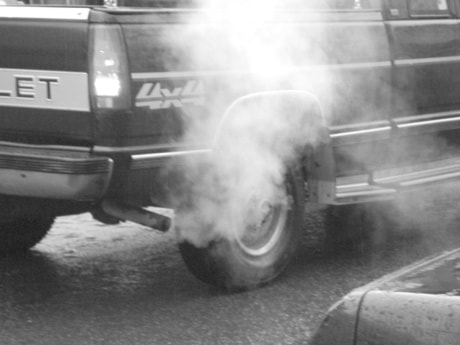TORONTO — Prolonged exposure to high levels of chemicals from motor vehicle exhaust fumes and industrial air pollutants can lead to hospitalization for pneumonia among seniors, a study has found.
The study, led by researchers at McMaster University in Hamilton, set out to assess the effects of long-term exposure to nitrogen dioxide and sulphur dioxide from motor vehicle emissions and fine particulate matter from industrial air pollution.
“We compared people over the age of 65 who were admitted to hospital for community-acquired pneumonia to randomly selected people from the same community who did not have pneumonia,” said principal investigator Dr. Mark Loeb, an infectious disease specialist at McMaster.
“And what we found was that individuals who developed community-acquired pneumonia were more likely to have long-term exposure to nitrogen dioxide (from vehicle exhaust) and they were twice more likely to be hospitalized.”
The study, to be published in the Jan. 1 issue of the American Journal of Respiratory and Critical Care Medicine, looked at 365 older adults living in Hamilton who had been hospitalized with pneumonia between July 2003 and April 2005.
They were compared to 494 control subjects randomly selected from the same neighbourhoods who did not have pneumonia.
The research team collected health information from participants and compared the two groups’ exposure to nitrogen dioxide, sulphur dioxide and fine particulate matter of less than 2.5 micrometres using data from air-quality monitoring stations.
They found that exposure for more than 12 months to higher levels of nitrogen dioxide and fine particulate matter more than doubled the risk of hospitalization for pneumonia in adults 65-plus. Exposure to sulphur dioxide was not associated with an increased risk of hospitalization.
Loeb suggests that exposure to pollutants increases susceptibility to severe pneumonia — most often caused by a bacterial infection — by interfering with immune system defences designed to protect the lungs.
“We postulate that there might have been effects on the innate immune system, that is these air pollutants would affect the ability of the lungs to clear pathogens,” he said in an interview from Hamilton.
“The results of this study highlight the important health impact that long-term exposure to ambient air pollution can have on respiratory infections,” Loeb said. “It also emphasizes the need to monitor emissions from vehicles, given that ground-level nitrogen dioxide is derived predominantly from traffic.”
Pneumonia is a leading cause of illness and death in older adults, with rates of hospitalization for the disease among patients 65 and older on the rise in recent years. While the role of air pollution has been recognized as a risk factor for asthma and other respiratory diseases, few studies have looked at the role of air pollution on pneumonia hospitalization in older adults, said Loeb.
“We need to put more thought into both doing surveillance on air pollution, and this adds to the body of knowledge on the negative impact,” he said of the study.
“When a number of studies show there’s a deleterious impact, that’s what can drive policies in terms of standards on vehicle emissions.”
